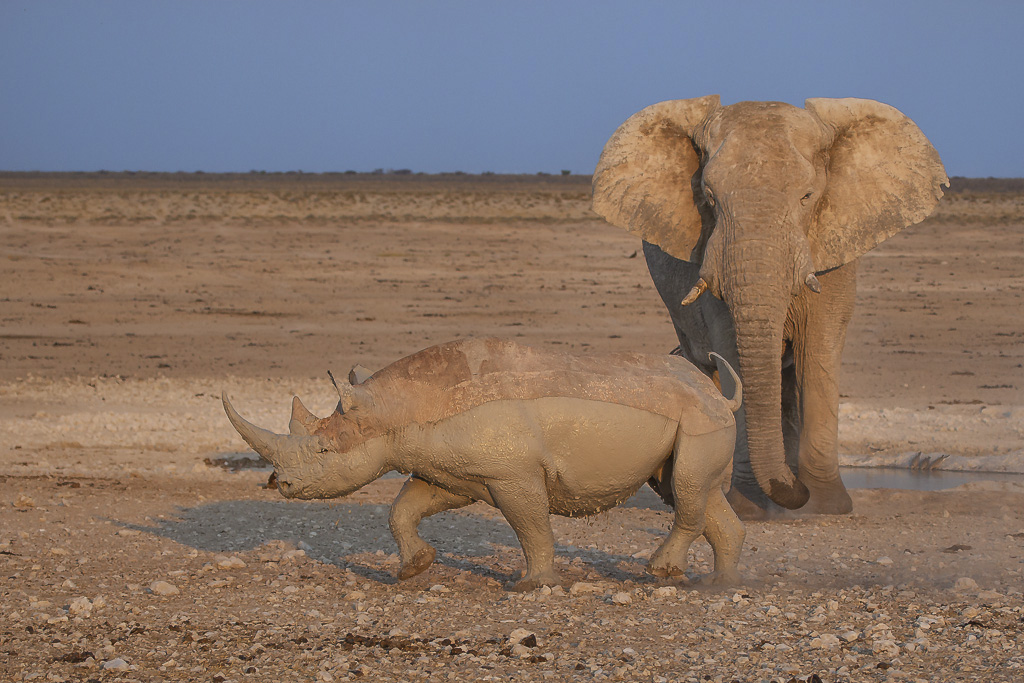In years past, South Africans have become extremely aware of the plight of rhinos and elephants due to poaching activity targeting these animals for their precious commoditised horns and ivory tusks.
For those fortunate enough to escape the scourge of greed and violence perpetuating their endangerment, the question arises: can horns and tusks grow back?
The answers are a little different for each of the great grey African icons.

Image credit: Andrew Schoeman
Fortunately for rhinos, their horns can grow back – making them look a lot more like themselves, but also posing a threat to their existence again when they do – especially as it’s easier for poachers to hack rhinos to death or poison them to steal their ‘precious’ horns. Black rhinos’ horns can take about three years to grow back to a decent size if the horn is not hacked off by injuring its skull, not far off the time it takes for a rhino calf to develop a medium-sized primary horn. Some conservation NGOS take it upon themselves to routinely shave off the growing horn after dehorning to keep the rhino from being a target of poachers.
Elephants aren’t always lucky, however, and if their tusks, made of dentine in some parts and coated in hardy enamel, are broken, or the root is damaged – very likely when ripped out – regrowth is not possible.
The removal of the horns and tusks generally causes great harm to rhinos and elephants in the form of gaping wounds and blood loss that can be fatal.
Elephants’ ivory tusks are actually an evolutionary vestige of what used to be teeth, and they still have many uses to the great animals today. Like teeth, however, the extraction of them can be quite painful as the ‘teeth’ or tusks are deeply embedded in elephants’ mouths (tusks belong to both male and female ellies).
Rhino horns, which consist primarily of a hardened keratin protein (just like human nails), are believed to be beneficial for treating certain maladies in traditional Chinese medicinal practices, and thus are highly sought after in parts of Asia. Ivory is also thought to denote status and wealth, and so its ‘uses’ vary.

















